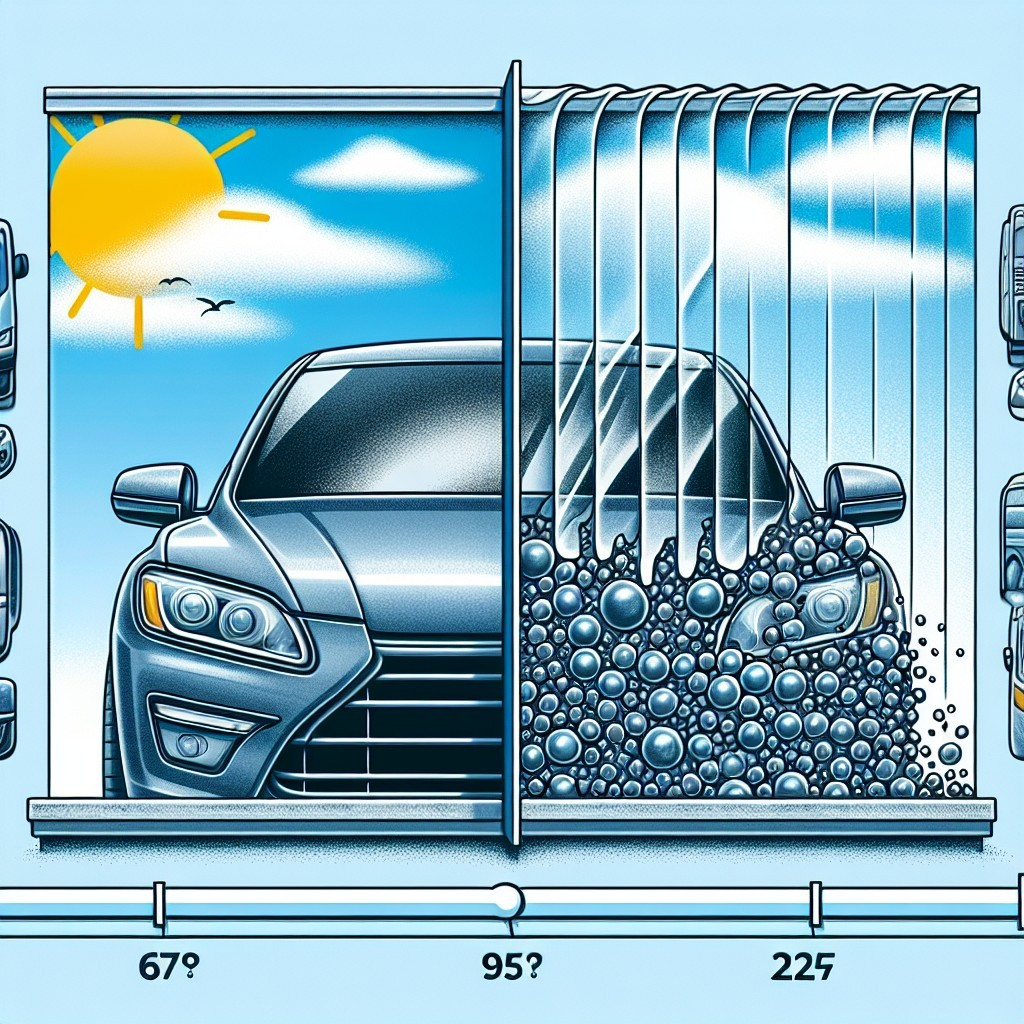When it comes to enhancing the aesthetics and functionality of your vehicle or home, window tinting is a popular choice․ Not only does it provide a sleek look, but it also offers benefits such as UV protection, heat reduction, and increased privacy․ However, like all things, window tint has a lifespan․ Understanding how long window tint lasts and recognizing the signs that it’s time to replace it can save you from unexpected issues down the road․
Understanding the Lifespan of Window Tint
Generally, the lifespan of window tint can vary widely depending on several factors:
- Type of Tint: There are various types of window tints available, including dyed, metalized, ceramic, and hybrid films․ Each has its own durability․ For instance, ceramic tints are known for their longevity and can last up to 10 years or more, while dyed films may begin to fade within 5 years․
- Quality of Installation: A professional installation can significantly enhance the lifespan of your window tint․ Poor installation can lead to bubbles, peeling, or other issues that may necessitate early replacement․
- Environmental Factors: Exposure to harsh weather conditions, sunlight, and pollutants can affect the durability of window tint․ Areas with extreme temperatures or high UV exposure may experience faster degradation․
- Maintenance: Proper care and maintenance can extend the life of your window tint․ Using non-abrasive cleaners and avoiding harsh chemicals will help maintain its integrity․

Typical Lifespan Estimates
While many factors contribute to the longevity of window tint, here are some general estimates:
- Dyed Window Tint: 5 to 7 years
- Metalized Window Tint: 7 to 10 years
- Ceramic Window Tint: 10 to 15 years
- Hybrid Window Tint: 7 to 10 years
These lifespans can fluctuate based on the aforementioned factors, but they provide a good baseline for what to expect․
Signs It’s Time to Replace Your Window Tint
Even the best window films will eventually show signs of wear and may need to be replaced․ Here are some telltale signs that it’s time for a change:
- Fading: If you notice your window tint losing its color or becoming significantly lighter, it’s a clear indicator that the film is deteriorating․ This not only affects aesthetics but also reduces its effectiveness in blocking UV rays․
- Bubbling: Bubbles can form beneath the film due to moisture or a poor installation․ These unsightly imperfections not only look bad but can also lead to peeling if left unchecked․
- Peeling: If the edges of your tint are starting to peel away from the glass, it’s time to consider a replacement․ Peeling can worsen over time and compromise the effectiveness of the tint․
- Scratches: Scratches on the surface of window tint can occur due to improper cleaning or abrasive materials․ Not only do scratches affect visibility, but they can also lead to further damage․
- Increased Heat: If you notice that your interior is getting hotter, it may be a sign that the tint is no longer effective in blocking heat and UV rays․ This can lead to discomfort and increased energy costs․
Final Thoughts
Window tinting is a valuable investment for your vehicle or home, but it’s essential to know when to replace it․ By understanding the typical lifespan of your window tint and recognizing the signs of deterioration, you can ensure that your windows continue to provide the benefits you desire․ Regular maintenance and timely replacement will keep your windows looking great and performing optimally․
So, if you’re experiencing any of the signs mentioned above, it might be time to consult with a professional for a replacement․ Your windows deserve the best!
Maintaining Your Window Tint: Tips for Longevity
To maximize the lifespan of your window tint, it’s essential to adopt practices that protect and preserve its integrity․ Here are some practical tips to keep your window tint looking sharp and functioning effectively:
- Avoid Harsh Chemicals: Cleaning your tinted windows with abrasive or ammonia-based cleaners can strip away the tint and cause premature fading․ Opt for a gentle, pH-balanced cleaner and a soft microfiber cloth to maintain the film’s quality․
- Patience Post-Installation: After the installation of new window tint, it’s crucial to allow the film to cure properly․ This process can take several days to weeks, depending on the climate․ Avoid rolling down windows or cleaning them during this period to prevent damage․
- Regular Inspections: Conduct periodic checks for any signs of bubbling, peeling, or fading․ Catching these issues early can help you address them before they escalate, potentially saving you from a full replacement․
- Professional Service: When it comes time for a replacement or repair, consider hiring a professional․ Experienced installers will ensure a high-quality application and can recommend the best products for your needs․
Choosing the Right Tint for Your Needs
When looking to install or replace window tint, it’s essential to select the right type that suits your specific needs․ Here are some factors to consider:
- Purpose: Are you primarily looking for UV protection, privacy, or aesthetic appeal? Different tints offer varying degrees of effectiveness in these areas․ Understanding your primary goals will help narrow down your options․
- Legal Regulations: Each state has its own laws regarding window tinting, including restrictions on the level of darkness and reflectivity․ Familiarize yourself with local regulations to ensure compliance․
- Warranty: Look for window tint films that come with a warranty․ This can provide peace of mind and protect your investment against defects or premature failure․
So, stay proactive, keep your eyes peeled for those warning signs, and ensure your windows remain a source of pride and protection!


I appreciate the breakdown of different types of window tints and their lifespans. It really helps in making an informed decision for my car!
This article is a must-read for anyone considering window tinting. The information about installation quality was particularly useful for me.
Very helpful guide on when to replace window tint! I’ve been wondering about the signs to look out for, and this covered everything perfectly.
Great insights on maintenance tips! I had no idea that using non-abrasive cleaners could extend the life of my window tint. Thanks for sharing!
This article provides a comprehensive overview of window tinting! I never realized how much the type of tint affects its lifespan. Very informative!